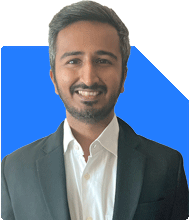Ramalingam Kalirajan |10872 Answers |Ask -Follow
Mutual Funds, Financial Planning Expert - Answered on Jul 10, 2024
He has an MBA in finance from the University of Madras and is a certified financial planner.
He is the director and chief financial planner at Holistic Investment, a Chennai-based firm that offers financial planning and wealth management advice.... more

I am 67 yrs old and I am ready to in equity based M F with high to medium risk appetite I have choosen following MF RS 5000 PM in each 1Quant Small cap fund 2 Nippon India Small cap fund 3.Invesco India PSU Fund 4.Quant Large and Midcap Fund 5. Nippon India power and infrastructure fund 6.Quand Mid cap fund 7.J M Flexicap fund 8.MOS Defence fund(New NFO)
Understanding Equity Mutual Funds
What are Equity Mutual Funds?
Equity mutual funds invest primarily in stocks. They aim to generate high returns by investing in a diversified portfolio of equities. These funds are managed by professional fund managers who make investment decisions based on market research and analysis.
Categories of Equity Mutual Funds
Small Cap Funds: These funds invest in companies with small market capitalizations. They have high growth potential but also higher risk.
Mid Cap Funds: These funds invest in mid-sized companies. They offer a balance between growth potential and risk.
Large Cap Funds: These funds invest in large, well-established companies. They are less risky and offer stable returns.
Sector-Specific Funds: These funds invest in specific sectors like power, infrastructure, or defense. They carry higher risk due to sector concentration.
Advantages of Equity Mutual Funds
Professional Management: Managed by experienced fund managers who make informed investment decisions.
Diversification: Spread investments across various companies and sectors to reduce risk.
Liquidity: Easy to buy and sell, offering high liquidity.
Potential for High Returns: Can provide significant returns over the long term due to stock market growth.
Risks of Equity Mutual Funds
Market Risk: The value of investments can fluctuate due to market conditions.
Sector Risk: Sector-specific funds can be highly volatile if the sector underperforms.
Company Risk: Poor performance of a company can impact the fund's returns.
Evaluating Your Chosen Funds
Small Cap Funds
Potential and Risk
Small cap funds have the potential for high growth but come with increased volatility. They are suitable for investors with a high-risk appetite.
Your Selection
Investing in small cap funds can be a good strategy for long-term growth. However, be prepared for market fluctuations.
Mid Cap Funds
Balance of Risk and Return
Mid cap funds offer a good balance between growth and stability. They invest in companies that are not too small but have significant growth potential.
Your Selection
Mid cap funds can provide moderate risk and reasonable returns. They are a good choice for investors seeking balanced exposure.
Large Cap and Mid Cap Funds
Stability and Growth
These funds combine the stability of large caps with the growth potential of mid caps. They provide a balanced risk-reward ratio.
Your Selection
This blend can help achieve a stable yet growing portfolio, suitable for investors with medium risk appetite.
Sector-Specific Funds
Concentrated Risk and High Reward
Sector funds focus on specific industries. They can offer high returns if the sector performs well but are risky if the sector faces downturns.
Your Selection
Sector-specific funds add diversity but increase risk due to their concentrated nature. They should be a smaller part of your portfolio.
Power of Compounding
How Compounding Works
Compounding is the process where the returns on your investments generate their own returns. Over time, this can lead to exponential growth in your investment value.
Benefits of Compounding
Wealth Accumulation: Compounding helps in building significant wealth over the long term.
Reinvestment: By reinvesting your earnings, you can maximize your returns.
Long-Term Perspective
Investing regularly and staying invested for the long term can harness the power of compounding. This strategy is crucial for achieving substantial growth.
Investing at 67 shows your commitment to growing your wealth. It’s commendable to continue seeking financial growth and security.
Balancing Risk and Reward
It’s essential to balance your risk and reward, especially at your age. Diversifying your investments can help mitigate risks while aiming for higher returns.
Your choice to invest in diverse mutual funds is commendable. It shows a well-thought-out strategy to achieve financial growth.
Analytical Evaluation
Assessing Fund Performance
Regularly assess the performance of your chosen funds. Look at their historical returns, risk factors, and management efficiency.
Diversification Benefits
Diversifying across different categories of funds can help manage risk. It ensures that poor performance in one sector doesn't drastically affect your overall portfolio.
Understanding Market Trends
Stay updated with market trends. It helps in making informed decisions and adjusting your portfolio according to market conditions.
Role of a Certified Financial Planner
Importance of Professional Guidance
A Certified Financial Planner (CFP) can provide valuable insights and advice tailored to your financial goals. They help in selecting the right funds and managing your portfolio efficiently.
Personalized Financial Planning
CFPs offer personalized financial planning based on your risk appetite, investment horizon, and financial goals. They ensure your investments align with your long-term objectives.
Regular Review and Rebalancing
Regular reviews and rebalancing of your portfolio by a CFP ensure that it remains aligned with your goals. They help in making necessary adjustments based on market conditions.
Final Insights
Staying Invested
Staying invested for the long term is crucial for achieving substantial returns. Avoid the temptation to make frequent changes based on short-term market fluctuations.
Diversification and Risk Management
Diversifying your investments across different categories of mutual funds can help manage risk. It ensures a balanced and stable portfolio.
Seeking Professional Advice
Consulting with a Certified Financial Planner can provide valuable guidance. They help in making informed decisions and managing your investments effectively.
Regular Monitoring
Regularly monitor your investments to ensure they are performing as expected. Stay informed about market trends and adjust your portfolio if needed.
Conclusion
Investing in equity-based mutual funds is a wise decision. It offers the potential for high returns and diversification benefits. By understanding the categories, advantages, and risks, you can make informed investment choices. Seek professional guidance to align your investments with your financial goals. Stay invested for the long term and harness the power of compounding.
Invest wisely and secure your financial future.
Best Regards,
K. Ramalingam, MBA, CFP,
Chief Financial Planner,
www.holisticinvestment.in
You may like to see similar questions and answers below
Vivek Lala |323 Answers |Ask -Follow
Tax, MF Expert - Answered on Oct 09, 2023
Ramalingam Kalirajan |10872 Answers |Ask -Follow
Mutual Funds, Financial Planning Expert - Answered on May 15, 2024
Ramalingam Kalirajan |10872 Answers |Ask -Follow
Mutual Funds, Financial Planning Expert - Answered on Aug 21, 2024
Ramalingam Kalirajan |10872 Answers |Ask -Follow
Mutual Funds, Financial Planning Expert - Answered on Oct 29, 2024
Ramalingam Kalirajan |10872 Answers |Ask -Follow
Mutual Funds, Financial Planning Expert - Answered on Nov 02, 2024
Radheshyam Zanwar |6735 Answers |Ask -Follow
MHT-CET, IIT-JEE, NEET-UG Expert - Answered on Dec 06, 2025
Dr Nagarajan J S K |2576 Answers |Ask -Follow
NEET, Medical, Pharmacy Careers - Answered on Dec 06, 2025
Mihir Tanna |1090 Answers |Ask -Follow
Tax Expert - Answered on Dec 06, 2025
Ramalingam Kalirajan |10872 Answers |Ask -Follow
Mutual Funds, Financial Planning Expert - Answered on Dec 06, 2025
Radheshyam Zanwar |6735 Answers |Ask -Follow
MHT-CET, IIT-JEE, NEET-UG Expert - Answered on Dec 06, 2025
Radheshyam Zanwar |6735 Answers |Ask -Follow
MHT-CET, IIT-JEE, NEET-UG Expert - Answered on Dec 06, 2025
Radheshyam Zanwar |6735 Answers |Ask -Follow
MHT-CET, IIT-JEE, NEET-UG Expert - Answered on Dec 06, 2025
Dr Dipankar Dutta |1837 Answers |Ask -Follow
Tech Careers and Skill Development Expert - Answered on Dec 05, 2025
Dr Shyam Jamalabad |108 Answers |Ask -Follow
Dentist - Answered on Dec 05, 2025
Dr Shyam Jamalabad |108 Answers |Ask -Follow
Dentist - Answered on Dec 05, 2025




























